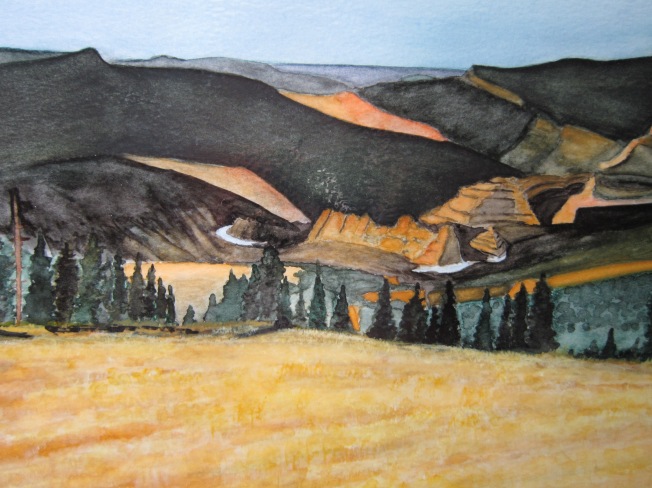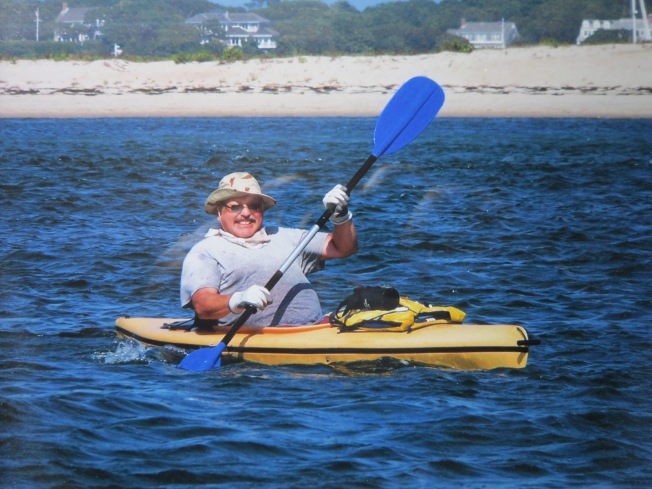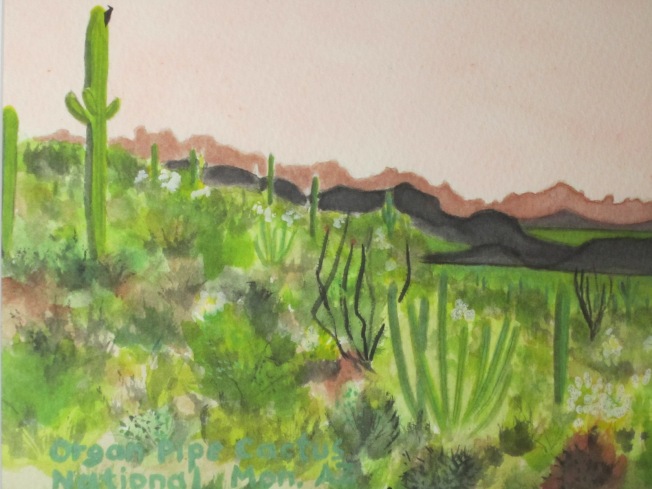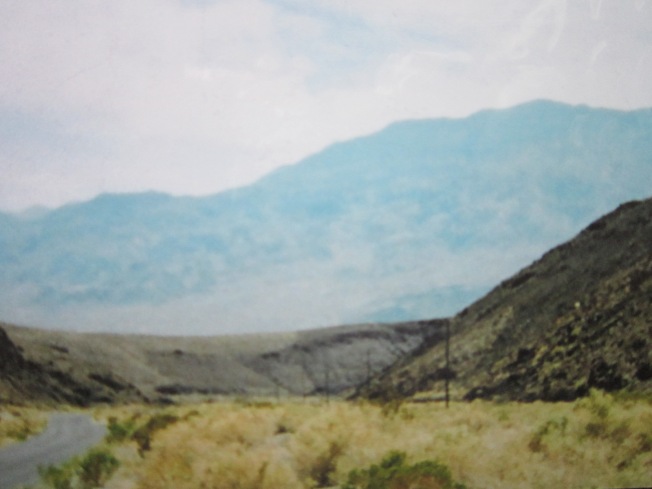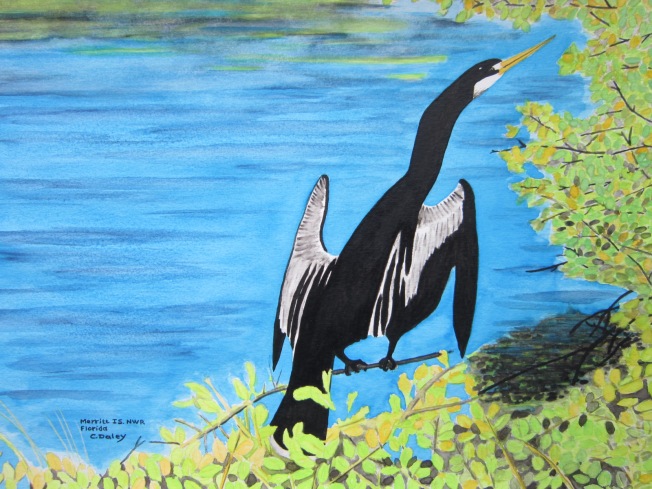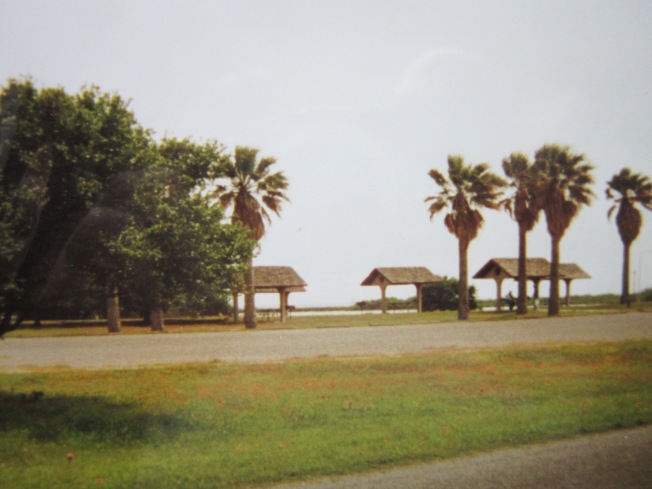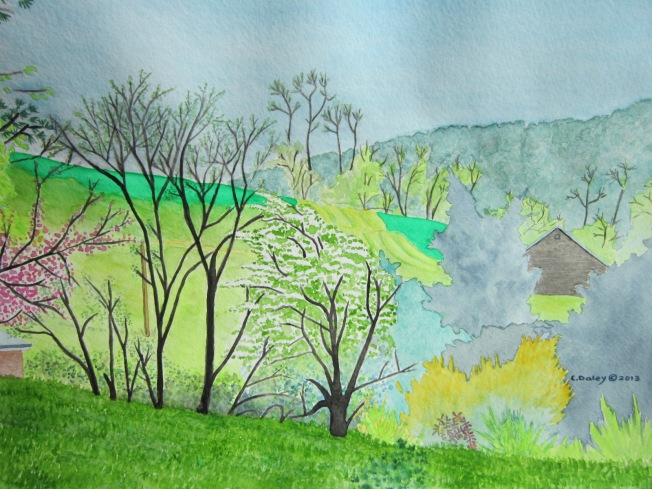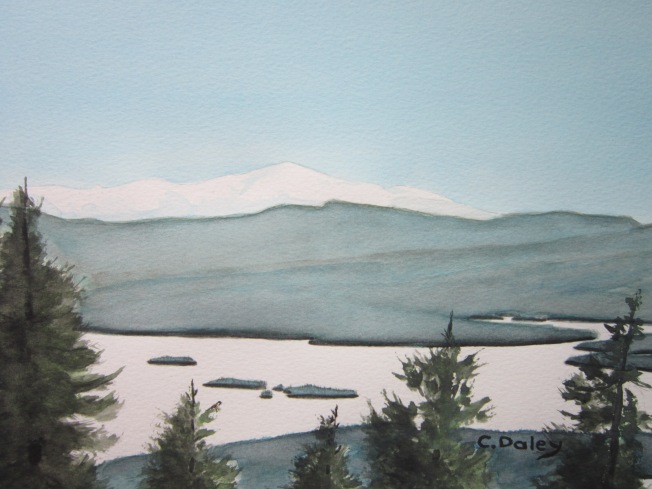
Mt. Washington 6,288′ tops the North Country from Boston into New Hampshire. The White Mountains NF introduces the Presidential Range, part of the Appalachian Trail. Access: I-93 corridor, NH16, the Kancamagus highway, US 302 or US 2 northern tier. Numerous ski areas and Lakes Region boating/resorts dot the area for all the multitudes! Autumn of course attracts leaf peepers for good reason as the fall colors are famous. I’ve seen scarlet tanager, evening grosbeaks and red breasted nuthatch among other NE species. Snowmobiling and ice fishing also bring in local tourism dollars. Watch for moose in the road! Watercolor.
